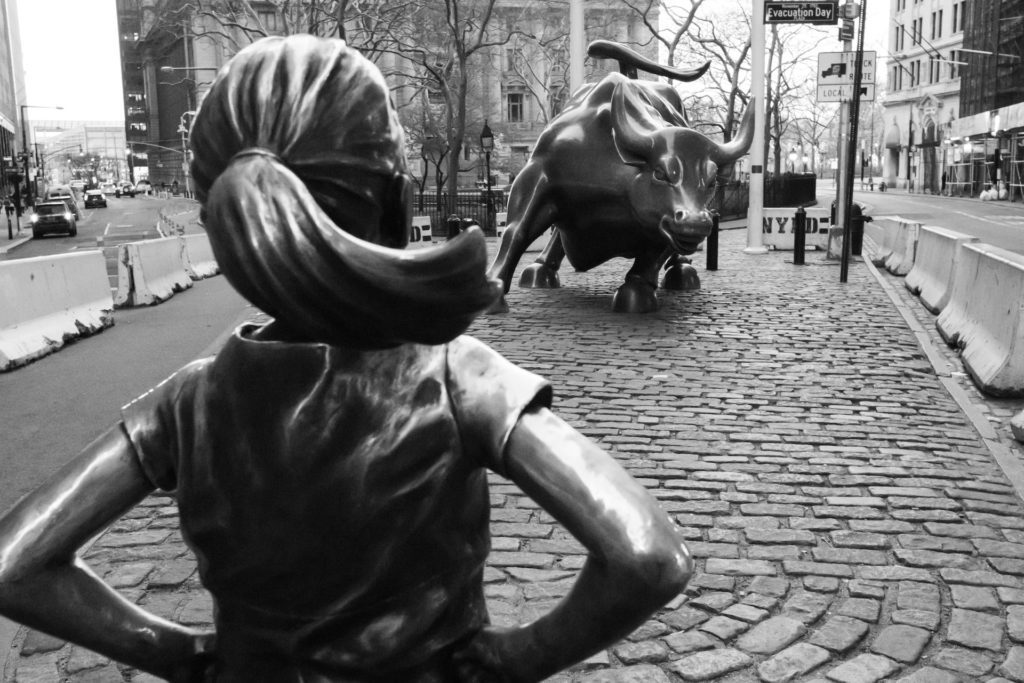Author: Oliver Lukitsch
Blockchain technology has been used to supercharge financial markets. Yet, currently, the downsides of crypto investments are more visible than ever. We seem to witness a bursting bubble. Has the crypto hype thus been debunked? Or, once the fog lifts, will we learn which blockchain promise really holds water? A bursting bubble and ensuing crisis can also be a good thing if we can learn from it – and if we see it as an opportunity to reveal blockchain’s real-world potential.
The crypto-crisis
The blog post at hand was inspired by the most recent events in the crypto market. One does not have to be a most attentive observer to stumble across the FTX scandal that shook the crypto world in recent days and weeks. The cryptocurrency exchange platform FTX filed for bankruptcy in November, creating a sound media echo. FTX is one of the most prominent players in the market. Thus, while the cryptosphere has seen many disruptions, this one is considered serious.
What happened exactly? The founder of FTX is the physicist Sam Bankman-Fried, often referred to as SBF. SBF was in finance before he engaged in the crypto business, thus no novice in the field. Before that, however, Bankman-Fried founded a hedge fund called Alameda. Alameda played a central role in how FTX crashed, so keep it in mind.

FTX was exchanging and holding various kinds of crypto assets for its customers, just like one can expect from an exchange platform – but rather than simply capitalizing on transaction fees, FTX’s users’ assets were used for speculation on the crypto market.
This is where the hedge fund Alameda comes in. It was the entity entrusted with the crypto assets held by FTX. And it borrowed these assets for its speculative investments. Today we know that Alameda gambled away these assets on the financial market. On a side note, FTX lending its users’ assets to a hedge fund would be illegal in the US, but FTX is based on the Bahamas, where regulation was more favorable.
What is more remarkable, however, is the kind of security Alameda presented for being able to borrow from FTX in the first place: it was a cryptocurrency called FTT – nothing less than FTX’s native cryptocurrency.
When CoinDesk, a crypto news platform, caught wind of the development, it published the news, and immediately, all hell broke loose. Substantial FTT shareholders (such as the CEO of Binance) sold their tokens, further exacerbating FTX’s financial stability. FTX’s bankruptcy ensued, and its users found themselves wondering where their billions had gone. They are victims of what seems nothing short of a Ponzi scheme.
Did we witness a bursting bubble or a bona fide Ponzi scheme?
Let us say a few words about why FTX’s case can be considered a Ponzi scheme. FTX using their client’s assets for speculation seems deeply disloyal and immoral (and illegal in some countries). Had it worked, however, the users might not be in jeopardy. Moreover, if proper securities had been in place, FTX might not have been able to lose its users’ assets for good. Yet, the security of the hedge funds’ operations was nothing but the value of FTX’s native coin itself. FTX’s ecosystem was built on a self-enclosed illusion. In contrast, if you possess Apple stocks, you also know where their value comes from, namely Apple products.
But did we really witness a Ponzi scheme? Or did we observe something more far-reaching? A proper crypto bubble about to burst? Looking at crypto assets specifically, it can sometimes be difficult to distinguish between Ponzi schemes and actual value-driven investments.
While good-old stocks often represent a company’s “real world” products (and services), crypto tokens (ought to) represent the value of a blockchain ecosystem. Blockchain ecosystems and their underlying technologies can make a real-world difference. They should deliver functions and services relevant and meaningful to their users (although many technology projects are missing this part currently). They are technologies that can be used for data storage, decentralized communication, IoT, and organizational design, among many other things.
However, in the wider public, this perception remains in the background at best. In the public eye, crypto is associated with speculation, first and foremost. The meaning of tokens and coins is often confined to their value as objects of investment and returns. What a token does and what kind of functions it enables in an ecosystem is reserved for those truly interested in the underlying technology and decentralized blockchain ecosystems.
Yet, as is often the case, the public eye matters. By creating hype around crypto assets, their actual value is disguised while their price increases disproportionally. This is how economic bubbles emerge. When a bubble grows, people stop paying attention to their investments’ intrinsic values. They just follow the pack, investing because others do and because there is a narrative that doing so will pay off big time.
Bubbles and Ponzi schemes are alike in disguising the intrinsic value of assets. Both Ponzi schemes and bubbles are overselling stuff. Both of them are mortgaged on their shareholders’ lack of knowledge. The FTX scandal combines these two things in a most incendiary way.

If we wonder too often if we are dealing with Ponzi schemes, then bubble alert kicks in
If, in a particular market, Ponzi scheme allegations proliferate, then a bubble might be imminent.
In the case of crypto assets, Ponzi-scheme allegations are not uncommon at all. Oftentimes, even Bitcoin itself was called out as a Ponzi scheme. After all, there is a fundamental difference between the value of a fiat currency and the value of a cryptocurrency and its institutional pegging. Fiat currencies represent the economic performance of a state or confederation. Bitcoin’s value only represents interest in Bitcoin, nothing more, nothing less. Whether Bitcoin has intrinsic value comes down to interpretation.
Granted, this is a philosophical question. But one we can bypass. There is a way one can easily discern the intrinsic value of an asset and its price on the market.
Why a bursting bubble can work wonders for crypto
There is a crucial difference between bubbles and Ponzi schemes. Once bubbles burst, we are left with the intrinsic value of a formerly overpriced asset. When a Ponzi scheme bursts, one is left with nothing because the basis of the scheme is a fantasy. This is why the former can happen in a perfectly legal fashion and why the latter is a crime.
This is also a reason why a bursting crypto bubble can be a healing moment for the technology and its future. For it can reveal the actual real-life potential of blockchain technology. In some cases, such as FTX and its native token FTT, it will reveal a lack of intrinsic value. A bursting bubble, however, can also reveal the practical, real-life value of crypto-ecosystems.
Indeed, many (especially Ethereum-based) ecosystems try to create different ways to organize companies, create fair and user-owned data storage, and decentral social media applications. “dApps,” applications based on the Ethereum blockchain, are not simply digital assets to invest in. They have digital yet real-life functionality. Even though many of such projects might be deprived of their funding after the current “crypto-winter,” their value becomes more apparent when they do not simply serve as assets for investment.
Purposeful blockchain technology
A vivid example of purposeful blockchain technology is Swarm, a decentralized data storage and distribution network aiming at establishing the next generation of censorship-resistant, unstoppable, serverless “dApps.”
For Swarm and its associated “Fair Data Society,” crypto is not simply an opportunity to invest in but a technology that can actually empower users’ data ownership and take control of their personal data. Moreover, the Swarm foundation funds scholarships for coders who want to create applications running on Swarm to foster their vision of a truly decentralized Web3.
We have been collaborating with Swarm since 2021, developing a toolkit to design decentralized and living ecosystems based on the principles of an autonomous and empowering Web3. Our focus was the needs of users and the values that shape their communities. Consequently, our focus was never on tokens and their values and the smartest way to invest.
Contrary, it was about the owners of their data regaining control over what they get in return when their data is used by others. Or that Wikipedia can remain accessible in states where it is banned, just to name an example. It was always about the intrinsic value and real-life purpose, about recognizing the benefits of technology, not about its value in the financial marketplace.
Where do we go from here?
A bursting bubble can reveal the value of the things we invest in. And therefore, we have a unique window of opportunity to pay attention to what stands firm even after the bubble has burst.
Aristotle formed the idea of “catharsis,” a purification in which bad emotions and character traits are overcome and give way to a more refined self. Maybe blockchain is in need of something similar. A crypto crisis can be catharsis rather than a crash.
Subscribe to Our Newsletter
Keep your innovative edge with more stories like this and additional reading tips, muses, and project updates.
Images by Nenad Novakovic, Raspopova Marina, and Daniel-Lloyd Blunk-Fernandez @ Unsplash


